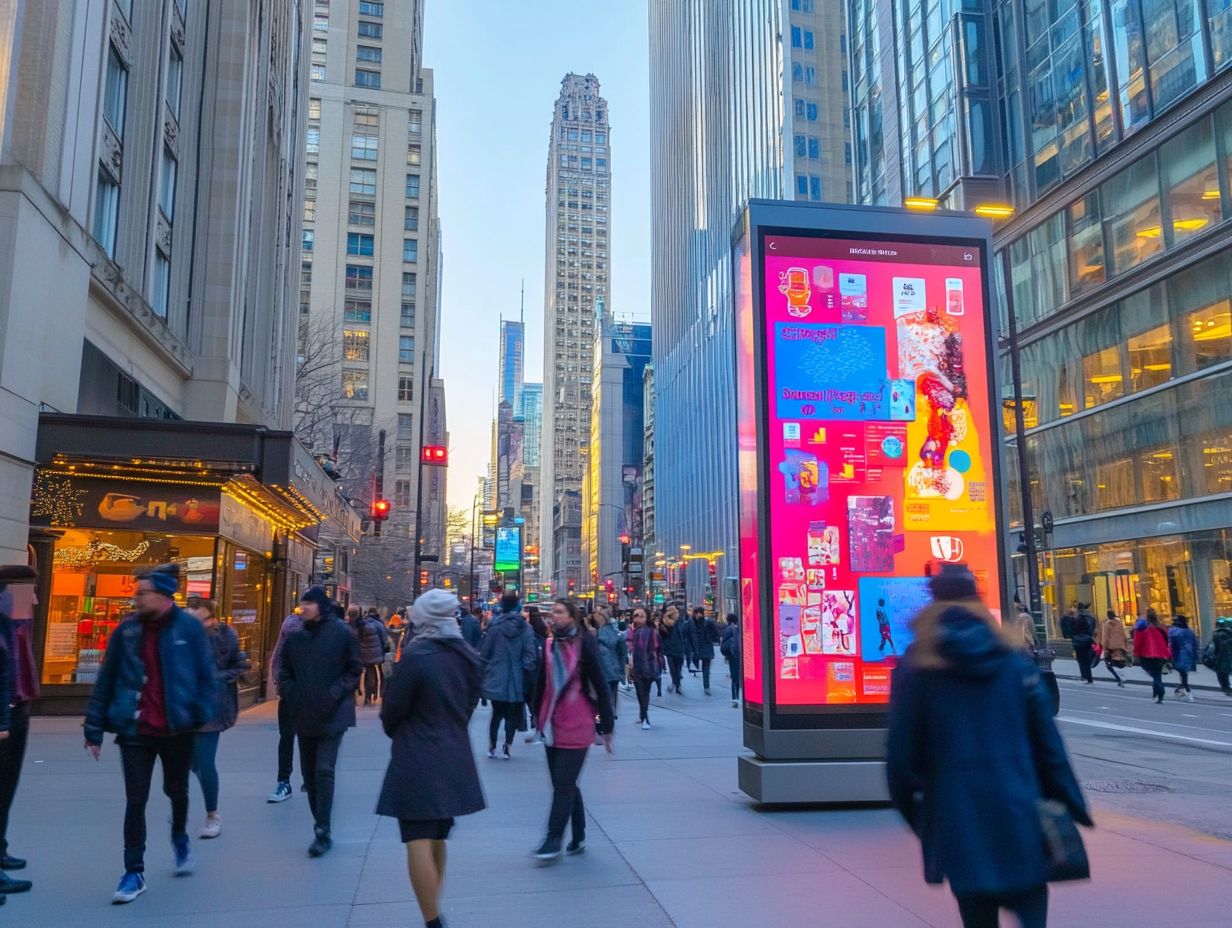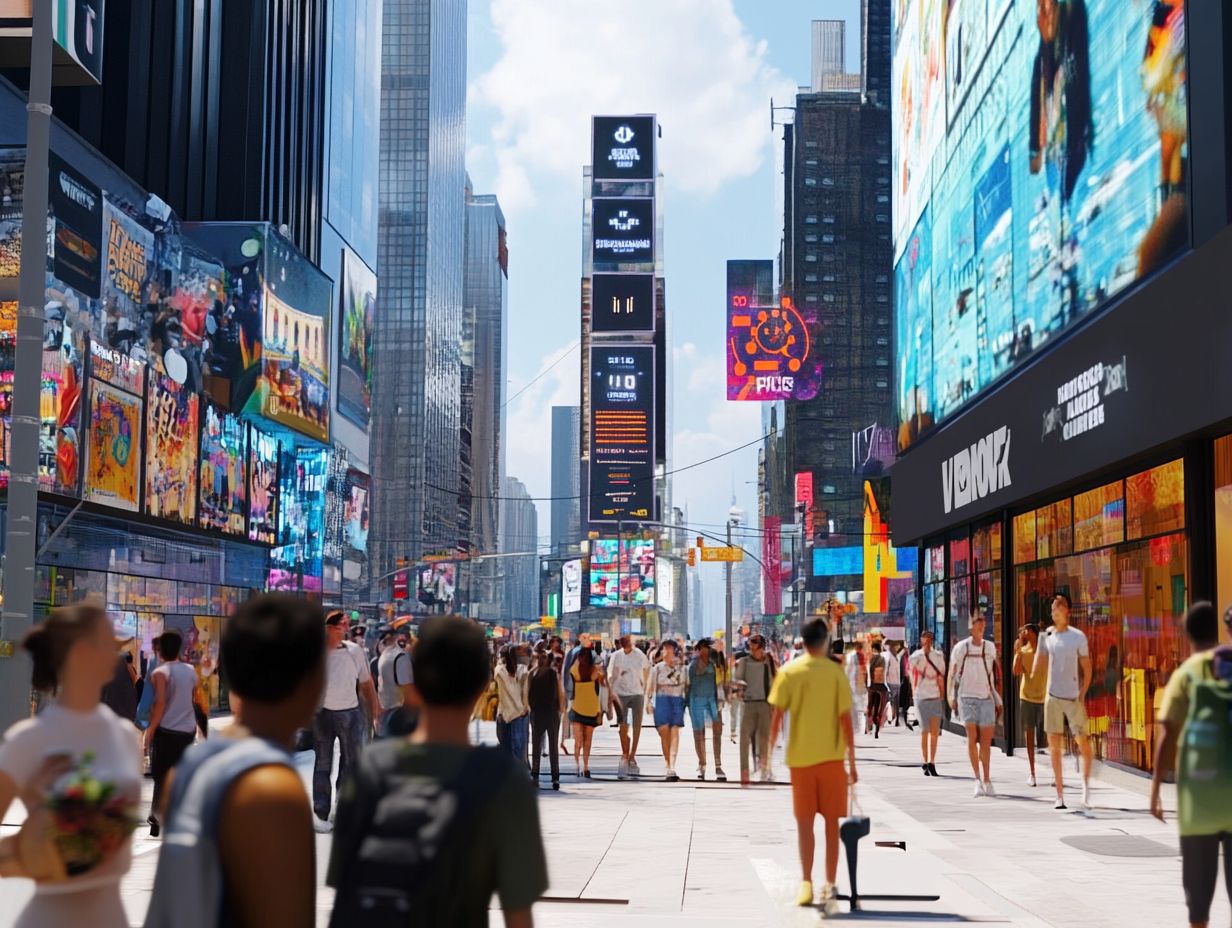In today’s dynamic urban landscape, understanding how people navigate cities is essential for effective planning and resource management. Foot traffic analytics provides valuable insights that can significantly enhance urban planning and city development, particularly during major tourist events. This article delves into the definition and importance of foot traffic analytics, its benefits for urban development, and its role in crowd management during major events. Additionally, it features inspiring case studies and offers practical tips for implementing these strategies in your own city. Discover how leveraging foot traffic data can transform urban experiences and enhance tourist attractions.
Understanding Foot Traffic Analytics

Foot traffic analytics plays a crucial role in modern urban planning and management by leveraging data analysis to monitor and optimize pedestrian flow in cities, enhancing safety measures and accessibility.
Through real-time data tracking and visitor demographics insights, city planners can gain a deeper understanding of visitor patterns and behaviors, which is essential for the development, economic impact assessment, and sustainability of smart cities.
This analytical approach informs decisions regarding city infrastructure and resource allocation, enhances the visitor experience, and supports local businesses.
Definition and Importance of Foot Traffic Analytics
Foot traffic analytics involves the systematic collection and analysis of visitor data to understand pedestrian flow in urban areas. This information has significant implications for the retail, tourism, and urban planning sectors.
As the name implies, foot traffic analytics focuses on the movement and behavior of individuals by utilizing advanced technologies such as sensors and mobile data tracking. With this data, stakeholders across various sectors can make informed decisions regarding store locations, marketing and advertising strategies, and inventory management.
In the tourism industry, foot traffic analytics is essential for estimating the sector’s economic impact, as it provides valuable behavioral insights into the effectiveness of attractions and cultural heritage events in attracting visitors. Cities can enhance pedestrian flow by identifying areas of congestion or bottlenecks and modifying the design of public spaces through spatial analysis, ultimately creating a better visitor experience for both residents and tourists.
For example, urban planners might use foot traffic analytics to improve signage around tourist attractions, ensuring smoother foot traffic and enhancing overall tourist satisfaction.
How Foot Traffic Analytics Benefit Cities

Foot traffic analytics benefit cities by enhancing urban analytics and urban planning through insights into pedestrian behaviors, which help inform resource allocation, promote community engagement, and improve public safety.
By analyzing visitor patterns and traffic signals, cities can optimize public spaces and transport hubs more effectively, ultimately improving the overall visitor experience while also supporting local businesses and community engagement initiatives.
Improving City Planning and Resource Allocation
Effective city planning relies heavily on accurate data, and foot traffic analytics plays a crucial role in guiding resource allocation, infrastructure development, and transportation planning to enhance urban mobility and adapt to changing traffic patterns.
By providing insights into pedestrian movement and behavior, foot traffic analytics give the power tos city planners to make informed, data-driven decisions that ultimately improve the livability of urban environments.
With this information, planners can identify hotspots that require additional public amenities, such as benches and parks, or determine the most suitable locations for public transportation hubs.
Understanding foot traffic trends and seasonal trends allows for the development of better strategies to alleviate congestion, manage pedestrian safety effectively, and incorporate predictive modeling techniques.
The implications extend to urban design and tactical urbanism, where the creation of pedestrian-friendly areas can foster community engagement, promote local businesses, and contribute to a vibrant urban landscape through smart infrastructure.
Utilizing Foot Traffic Analytics for Tourist Events

Foot traffic analytics for tourist events enhance event management and logistics by supplying city planners and event organizers with actionable visitor information.
This data enables more accurate event forecasting and effective crowd management.
Predicting and Managing Crowds for Tourist Events
Utilizing foot traffic analytics and predictive analytics to predict and manage crowds at tourist events is essential for ensuring smooth operations and enhancing event logistics. By leveraging foot traffic analytics, cities can enhance crowd management, optimize event scheduling, and streamline visitor flow while prioritizing public safety and emergency response strategies through effective event coordination.
According to a report from the World Tourism Organization, cities can employ data analytics tools and analytics platforms to gather real-time insights into visitor behavior, providing valuable feedback that enables more accurate forecasting of attendance spikes and better resource allocation.
For instance, cities hosting large festivals can analyze historical attendance data, merchandising opportunities, and social media trends to forecast crowd sizes more effectively. Simulation models and digital mapping can then be used to visualize crowd movement and visitor flow, helping to identify potential bottlenecks and enhance destination marketing strategies.
This proactive approach not only alleviates congestion and enhances the overall visitor experience but is also crucial for emergency evacuation planning and assessing the environmental impact.
Case Studies and Success Stories

Case studies and success stories from cities utilizing foot traffic analytics demonstrate the positive impact this data can have, especially in relation to hosting tourist events and enhancing visitor experiences.
Real-life Examples of Cities Using Foot Traffic Analytics for Tourist Events
New York, San Francisco, and Barcelona are prime examples of cities that utilize foot traffic analytics to enhance their tourist events, thereby driving higher tourism revenue and improving visitor demographics through targeted engagement strategies.
In New York, advanced analytics tools such as Placer.ai and STR are employed to monitor visitor patterns in real time, enabling the city to optimize event locations and timing, which has subsequently led to increased attendance rates.
San Francisco leverages data insights from Geolytics to inform its marketing campaigns, focusing on peak visiting hours and visitor interests in attractions, resulting in a significant boost in visitor engagement during cultural festivals.
Barcelona has adopted heatmap technology to analyze movement trends, allowing for better resource allocation during peak times of major events. This improvement enhances the overall tourist experience and contributes to a substantial increase in tourism revenue.
These cities exemplify how integrating foot traffic data can facilitate more strategic decision-making in tourism management.
Implementing Foot Traffic Analytics in Your City
Implementing foot traffic analytics in a city requires stakeholder collaboration, effective data collection methodologies, and a clear understanding of urban dynamics to enhance city planning, visitor engagement, and city resilience.
Tips and Strategies for Implementing Foot Traffic Analytics for City Planning
Cities can enhance their planning efforts by implementing foot traffic analytics, utilizing data visualization tools, focusing on local attractions management, and engaging community stakeholders to maximize the benefits of these resources through comprehensive stakeholder engagement.
Comprehensive data analysis and visual analytics enable urban planners to track movement patterns and peak visitation times, which can lead to improved infrastructure, smart technology integration, and an enhanced visitor experience.
Heat maps and other visualization tools and geo-analytics help planners identify areas that attract the most foot traffic, allowing for appropriate allocation of resources and event marketing strategies.
Collaborating with local businesses and city officials fosters a better understanding of community dynamics and involves local stakeholders, which can support various initiatives in tourism management and economic development.
Engaging with the community and incorporating citizen feedback ensures that pedestrian-friendly efforts address the needs and expectations of residents, creating an environment that fosters tourism, local culture, and sustainable vibrancy.





